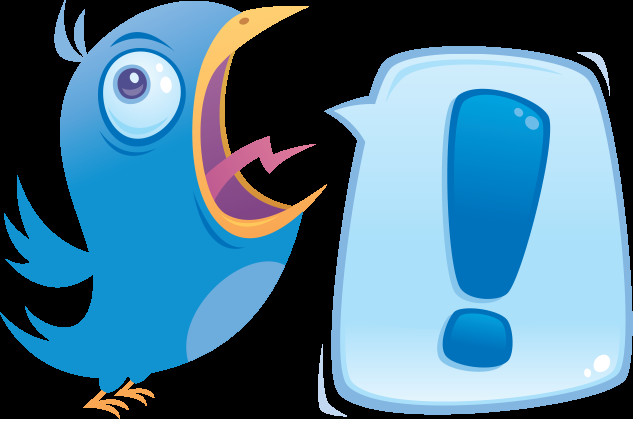How journalists are embracing the innovation of Twitter

 |
| Dr. Alecia Swasy |
The Denver Post's online night producer was about to go home when he made one last check of his Twitter account at about 1 a.m., July 20, 2012. A tweet said multiple gunshots had been fired at a movie theater in Aurora, Colo. The night editor called the metro editor and others back to work, allowing The Post to quickly get a story on its website and in the morning newspaper. Twelve people were killed and dozens more injured in the theater shooting, making it one of the deadliest rampages in U.S. history.
"If the night producer hadn't checked Twitter, we would've been way behind," said Dan Petty, then social media editor at The Post. Likewise, when The Post wanted to find local runners after the Boston Marathon bombings, editors scanned Twitter to see who had crossed the finish line and who remained on the course. "Twitter will always be faster," Petty said. "You can have a newsroom of 200 people, but we can't compete with hundreds of people at the finish line."
|
Twitter tips
A little birdie told me |
Twitter has become a powerful communications tool. Marketers use it to promote new products or conduct instant surveys of consumers. Hollywood celebrities use it to expand their posses. And journalists are embracing it as a new tool in their daily routines. The social media platform is an information distillery that allows journalists to find more stories and sources. Twitter is a virtual reporting partner that helps reporters extend their surveillance overnight and around the globe. And it has changed the publishing food chain; Twitter is now first and foremost when sharing breaking news and sports.
Even early skeptics have become Twitter converts. Craig Pittman, environmental reporter at the Tampa Bay Times, admits he scoffed at Twitter in the early days. "I had this image of ... this is where people post pictures of their food," Pittman said. "We had an intern who asked me, 'Do you have a Twitter account?' I told him, 'No, people would find my life boring.' "
When asked how they now define Twitter to someone who had never heard of it or used it, the journalists had a wide range of definitions.
But as journalists experiment with Twitter, they start to see its potential as a tool in their work. When asked how they now define Twitter to someone who had never heard of it or used it, the journalists had a wide range of definitions. Many compared it to other innovations, often dated to their own experiences, such as Bud Kennedy, a metro columnist at the Fort Worth Star-Telegram. He likened Twitter to a "modern day version of the CB radio," which was big in the 1970s, especially among truck drivers who wanted to know where the speed traps lurked.
Others define it as an index to world events that makes it easier to sort through the deluge of information sources. It is a compatible tool for their daily routines of constantly looking for news. "It's a table of contents of the world," said Joe DeLuca, publisher of the Tampa Bay Times. "It can't give you the depth of information that a piece of journalism can, but it can tell you 'this is out there.' This is something people are interested in right now." Michael Kruse, an enterprise reporter at the Times, set up his Twitter feeds based on personal and professional interests, such as other Florida media outlets, magazines where he publishes freelance articles, and news about his hometown of Boston. "I can see what I need to see more quickly and efficiently."
Many of the journalists interviewed have shunned Facebook because they believe it is has become a dumping ground of useless information. "Twitter is a lot more concise and has a lot less crap," said Melissa Lyttle, a Times photographer. She quit Facebook for a couple years because "I didn't like these people in high school and I don't want to see pictures of their kids. And how many OMG cat videos can I look at in one day?"
Journalists of all ages are engaging in Twitter, but many of the younger generation – those in their 20s and early 30s – view themselves as on the cutting edge of Twitter. The early adopters were "younger people like me," said Amber McDonald, the 29-year-old digital audience specialist at the Times.
"It's much more natural for my generation. My parents are a lot more active on Facebook," said Sarah Mervosh, a 23-year-old criminal justice reporter at The Dallas Morning News. One reason is likely the prevalence of smartphones and easier, mobile access to the Internet. That has been a given for younger reporters as compared to older reporters who were more tethered to their desktop computers and landlines. DeLuca at the Times describes smartphones as "an appendage" for millennials.
Katie Leslie, city hall reporter at The Atlanta Journal-Constitution, said she is glad she was on the leading edge of using Twitter in her work. "This is an older newsroom and some people see it as another thing I have to do. I get that. I feel that way about a lot of things. I saw value in it."
Charles Gay, deputy managing editor for local news at AJC, believes some of the veteran journalists are "intimidated" by new technologies such as Twitter. "It's a newsroom. There are a certain number of hidebound people," he said. "It's a culture we're trying to break.
"When I first started, we wrote stories and made photo assignments. That was it," Gay said. Twitter is "an added responsibility." Journalists are now expected to "become your own marketing department. You want your friends, followers and people in the community to know what you're doing."
AJC reporter Leslie has seen that slowly change as younger reporters have been added to the staff and Twitter has also become "a newsroom expectation." To be sure, there are exceptions. Bob Trigaux, a 59-year-old business columnist at the Times, was one of the first in that newsroom to use Twitter. He believes the Times "could do a better job encouraging all online activity more aggressively, ranging from always filing a story online first and fast, to being more aggressive on Twitter. "It still feels early on in our efforts," he said.
Clearly, that sense of urgency in adopting new technologies such as Twitter starts with the individuals, regardless of their age. But it can be fostered to a greater extent when journalists see those in their peer group embracing it. Based on the interviews, there were no signs that Twitter adoption and use differs between male and female journalists. The only exception appears to be in sports coverage because those beats are still covered predominantly by men. But men and women cover beats equally in other departments.
Twitter has become a virtual reporting partner and substitute when staff can't cover all work shifts or beats. The Dallas Morning News breaking news editor Matt Peterson considers it invaluable in his role as editor of general assignment reporters and interns. "It's the first program I fire up in the morning to see what happened overnight," he said. "To keep up with the competition, you need to be Twitter literate. That's where everyone is putting their stuff first." Indeed, Peterson sees Twitter as a technology that has changed the entire mindset of newspapers. Before Twitter, "we were more interested in getting (the whole story). Accuracy is still the first thing, but we're very much interested in getting it first."
Leslie, AJC's city hall reporter, puts it bluntly: "If you don't have it on Twitter first, you didn't have it first." She now writes a short website story only after she has sent out a few breaking news tweets.
Twitter is especially helpful in following up on tips from an overnight freelance reporter who monitors the police scanners. The Dallas Police Department now has several patrol officers sending out tweets from crime scenes. "The police chief is not the most media-friendly guy so I think this is almost a way to be in competition with the newspaper," Peterson said. "It's to control their message and show they are in tune with the community and show they are real people, too." Regardless of the police department's motives, the blogs and tweets can lead to getting photos from crime scenes.
Likewise, it helps Peterson's team move quickly from rumor to fact when news is breaking. He recalled when tornadoes struck a Texas school: "We didn't have reporters right there at the time," he said. "The emergency management people will not give you anything until they're at the scene." So reporters searched Twitter for the name of the school and were able to gather tweets from people inside the school, and let their readers know everyone was safe. "Without Twitter, we would've had to wait for hours before we learned something," Peterson said.
Twitter is also embraced as a new technology to locate people who can contribute to the coverage of their beats, especially when news is breaking. The platform was helpful when The Denver Post business staff was covering General Motors' recall of autos with faulty ignition switches. Given the age of the cars, reporters faced difficulties finding owners of the vehicles, so they tweeted out a request for owners to contact the paper. They found a Colorado GM owner, but he was working at a research station in the South Pole. So the reporter interviewed him via Twitter. "It gets us to people we couldn't get to," said Dana Coffield, The Post's business editor
Editors and reporters agree that sports coverage is a natural fit for Twitter largely because of the play-by-play nature of football or baseball, as well as the religious-like following by fans. "In digital, it is massive. It's the intensity of the audience," AJC managing editor Bert Roughton said. Mobile devices "are toys. It's boys playing with toys." Other research has shown the rise of multiple screen use by young men, especially during sporting events. They like the camaraderie of tweeting with friends and reading others' tweets while watching the game on television.
David O'Brien, who covers the Atlanta Braves baseball team, is one of the paper's most popular writers on Twitter. He tweets the entire game so it's a "cool way for people to see the story build." Roughton has considered reprinting the Twitter stream as a narrative in the print edition. "It's not a bad narrative."
Twitter also enriches the conversations between readers and reporters, a relationship that has often been strained because the old letters to the editor or phone calls were generally ignored by journalists. "You can't have coffee with everyone who reads your stuff and you don't want to because half of them are crazy," said Sarah Blaskovich, digital entertainment editor at the The Dallas Morning News. "Twitter is a way to talk to so many more people."
Next: The impact of Twitter on newspaper journalists
Dr. Alecia Swasy is a professor and Sleeman Scholar of Business Journalism at the University of Illinois' College of Media. She earned her doctorate of philosophy from the Missouri School of Journalism and began her Twitter research project at the Donald W. Reynolds Journalism Institute.






